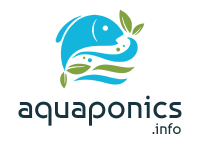All about Aquaponics
An aquaponics system describes a system of farming with aquaculture. The system circulates wastewater produced mainly by farmed fish and supplies it with its nutrients to hydroponically cultivated plants. These, in turn, filter and purify the water, recycling it back to the fish tank.
All about Aquaponics
An aquaponics system describes a system of farming with aquaculture. The system circulates wastewater produced mainly by farmed fish and supplies it with its nutrients to hydroponically cultivated plants. These, in turn, filter and purify the water, recycling it back to the fish tank.
An aquaponics system is often described as a hydroponics system with fish which, although easily understood, is not entirely accurate. In effect it mimics, to a degree, a natural pond or lake with aquatic animals that feed the plants around and within the body of water.
In greater detail, aquaponics is the effective combination of two well recognized and verified food production systems, Hydroponics and Aquaculture. This is achieved without using chemical additives or synthetic fertilizers (for the plants) and without the use of antibiotics and growth hormones (for the fish). The use of either automatically and adversely affects the other, effectively making neither organic.
The whole process is very simple and extremely efficient. A variety of freshwater fish (or diadromous fish) are hatched, raised, fattened and kept (to plate size) in an aquaculture system with a balanced diet of good quality fish feed (non-land animal-based feed), discarded plant matter, larvae and worms from the system. The fish excrete faeces containing natural ammonia which enriches the water with nitrites, which in turn are converted to nitrates by naturally occurring useful bacteria (the nitrogen cycle). The remaining solids from the faeces are harvested by mechanical means between the two processes or captured by gravel filtration in the hydroponic section.
The rich in nutrients water is then driven by a pump to the hydroponically grown plants. There, the nitrates fertilize the plants which in turn filter the water. On their own, the fish faeces constitute a powerful and complete natural fertiliser for other plants and trees outside the aquaponic system (fruit orchards etc.). The filtered clean water is now fed back to the fish tank (the aquaculture part of the system) and creates the perfect environment for the fish to live in. This constitutes a well balanced and closed-loop system.
The field of Aquaponics (Aquaculture and Hydroponics) is growing at a phenomenal pace due to its uncommonly bountiful productivity in comparison to other competitive agricultural systems such as in-soil planting and hydroponics.
The methodology requires no heavy machinery or large tracts of arable land and the mechanics are very simple but production is exceptionally profuse. Aquaponics also surpasses the production levels of stand-alone Hydroponics from the second year of production.
Turning Aquaponics into a successful business
All people who have started cultivating vegetables and other plants in an aquaponics system know that it is highly profitable in the shortest time possible.
The main reason is that plants do very well in an aquaponics environment. It is full of the right nutrients, rich in oxygen and almost pest-free. To put it simply, it is the ideal environment for a plant to grow in.
As for the farmer, the whole process of creating and maintaining an aquaponics system requires little effort, compared with the traditional methods of farming. It is estimated that the initial cost of the whole system’s infrastructure will be compensated in the first few months. Let us not forget that the entire produce (vegetables and fish) is of the highest quality.
Recent aquaponics articles
Crustaceans
There are several crustaceans used in aquaponics and their ideal temperature ranges are as follows: Prawns: 27.7°C – 31°C, Lobster: 21.6°C – 24.4°C, Oysters: 23.89°C – 26.1°C. All feed on organic plant matter and they are used to keep fish tanks clean. Each grows to plate size in Prawns 6 – 12 Months, Lobster 24 Months, Oysters 24 Months.
Bass
This species ideal temperature range is 23.9°C – 29.4°C and it requires the constant monitoring of oxygen, water quality, and pH. It is a North American species that is viable, accessible but not very adaptable. It has a poor food conversion ratio and a slow growth rate. It is also carnivorous and reaches plate size in 12 – 18 months.
Carp
The ideal temperature range for this species is 12.77°C – 23.88°C which is quite wide. They can tolerate low to fair water quality and are viable and popular eating in some areas of the world. They are hardy, adaptable, and heavy waste producers but can only be kept in low stock density. They have a high food conversion ratio and are fast-growing and omnivorous. They reach plate size in 9-12 months.

